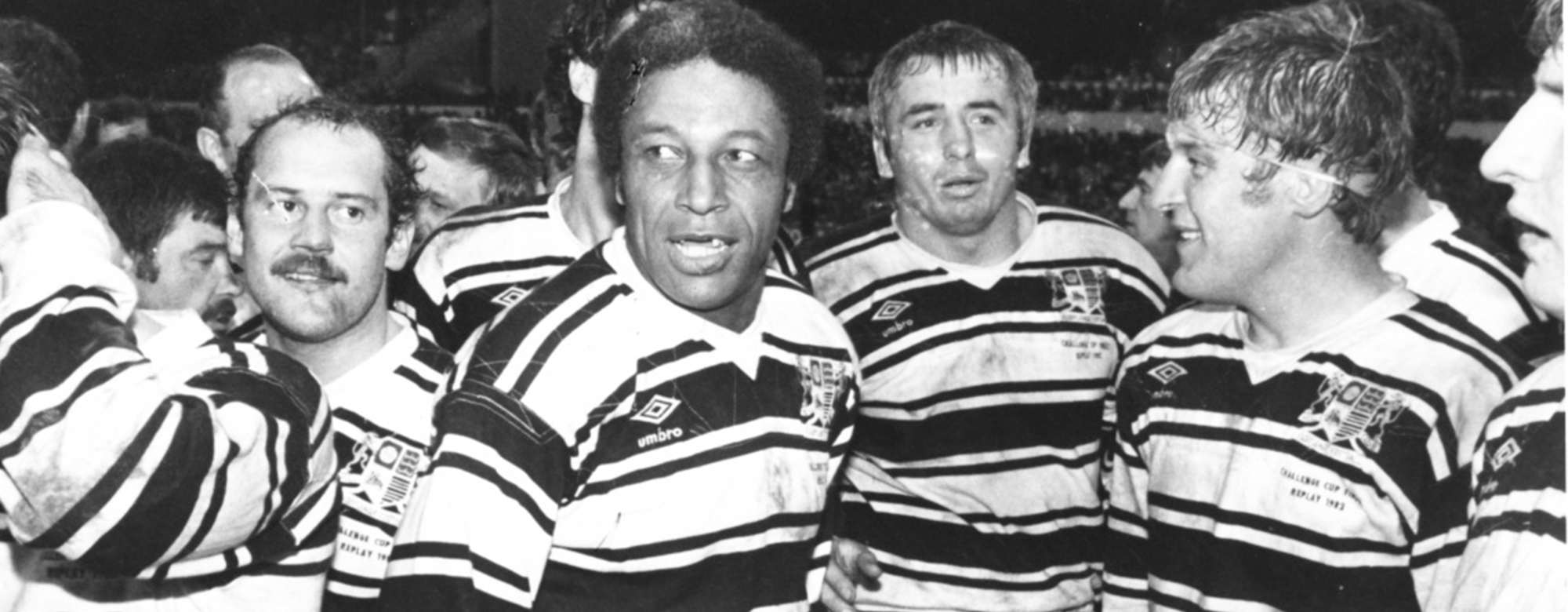Hull FC are traditionally known for their Black & White irregular hoops, but it is a lesser known fact that they have actually worn black shirts for a large part of their early years.
Hull first wore black shirts with the three crowns badge, still present on today’s jerseys, following the merger with Hull White Star in the summer of 1881.
White Star wore black shirts with a star in the centre of their chest so this briefly became Hull’s image, as recreated in modern times for the Magic Weekend in 2016.
The club briefly reverted to cherry and white narrow hoops around 1891, but after realising these colours would run badly, they quickly changed to all black shirts which became the norm.
From then on, the team were dubbed the “All-Blacks”, named after the original New Zealand team who toured Great Britain in 1888.
The name stuck, despite the use of white shorts, and the strip remained this way at the time of moving to the club’s famous home ground, the Boulevard.
An all-white strip appeared in the 1901-02 season, but in 1904-05, a hooped blue and white jersey was adopted.
The famous black and white irregular hoops first appeared in the 1909 Challenge Cup Final against Wakefield.
The design was adopted from that of the 1908-09 Australian touring side whose colours were light blue and maroon – in line with the state colours still worn by New South Wales and Queensland to this day.
While the irregular hoops became synonymous with Hull FC across the rugby league world for the next century, a number of alternative designs have appeared throughout the club’s history.
Hull wore a black ‘V’ on a white shirt during their first trip to Wembley Stadium in the 1959 Cup Final, whilst a plain blue shirt was occasionally used to avoid colour clashes with teams like Widnes and Featherstone.
This is where both the ‘V’ and the colour blue have become regularly used designs and colours in the club’s modern day home and away strips.
Sometimes though the design of the club kits would not be through choice.
After the Second World War, clothing coupons rationing meant that blue shirts were worn on numerous occasions by the team.
In turn, this prompted appeals by the Directors at the time encouraging supporters to spare any coupons they may have.
They match programme for the Castleford game, sated 5th September 1946, declared that “After a good result, we hope to be turning out in the Black & White in a few weeks.”
Since the successful period of the 1980s and the introduction of sponsorship and kit manufacturers, the designs and colours have changed dramatically.
Colours like purple have been introduced in previous years, as well as a number of abstract designs coinciding with changes to the club badge.
The club have also produced a number of special one-off kits in unique designs in recognition of charities, the armed forces and community rugby league.
In recent years, beneficiaries have included Children In Need, Help for Heroes, the RFL wings appeal and the Steve Prescott Foundation, with colours like yellow, pink and even camouflage often being adjoined to the club’s famous irregular hoops
















